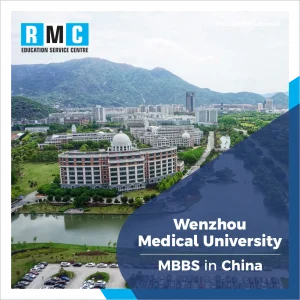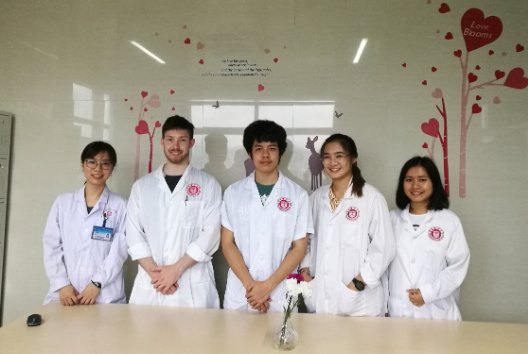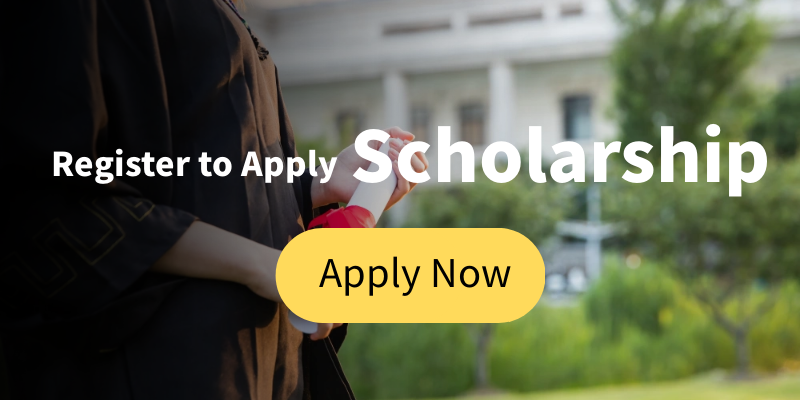Wenzhou Medical University offers 27 programs to over 15,000 students, with scholarships covering 30% of undergraduates through government and university awards, creating an affordable study environment with strong student support.
Table of Contents

Programs Offered
According to 2023 school enrollment data, a total of 27 undergraduate programs are offered, covering major fields such as Clinical Medicine, Stomatology, and Pharmacy, with 10 of them designated as National First-class Undergraduate Programs.
The university has an enrollment size of approximately 15,000 students, with graduate students accounting for 30%. It cooperates with 20 affiliated hospitals to provide clinical practice, with an annual average of over 1,200 hours of practical class time.
International student programs, such as MBBS (Clinical Medicine), are taught entirely in English, enrolling students from over 30 countries annually. Continuing education programs provide training for 5,000 person-times annually, forming a multi-level talent development framework.
Undergraduate Program Setup
Undergraduate education is primarily five-year. The Clinical Medicine program enrolls an average of 400 students annually, with a curriculum comprising 180 credits, of which practical sessions account for 35%.
The Stomatology program has 8 simulation laboratories, and students are required to complete 1,500 hours of preclinical training.
The Pharmacy program emphasizes scientific research capability, with 40% of undergraduates participating in a supervisor’s research project, and a 92% pass rate for blind review of graduation theses. All programs implement a credit system, allowing students flexible completion of studies within 3-6 years.
Graduate Education Pathways
Graduate training emphasizes interdisciplinary studies. The university has 8 primary disciplines authorized to offer Master’s degrees and 2 primary disciplines authorized to offer Doctoral degrees.
Master’s programs enroll an average of 600 students annually, with a 3-year duration and a requirement of 32 credits. Doctoral programs require a cumulative impact factor of not less than 5.0 for published SCI papers, with an annual average graduation rate of 85%. Program design emphasizes practice:
- Clinical Medicine professional master’s programs align with resident standardized training, with a practical cycle of 33 months
- Basic Medicine academic master’s programs require a minimum of 12 months of laboratory rotation
- Pharmacy industry-enterprise cooperative projects account for 30%, with 15 joint training units
- The pass rate for external review of degree theses consistently remains above 88%
International Student Programs
International education centers on the MBBS program, with all-English instruction classes accommodating 50 students/year, and the curriculum adhering to WHO standards.
Students must pass the HSK Level 4 examination. Language support courses provide 600 hours of Chinese language training. Clinical internships are arranged in 6 Class A tertiary hospitals, with an internship duration of 52 weeks.
The licensing exam pass rate for program graduates returning to their home countries is 85%, and the alumni network covers 40 countries. Short-term exchange programs cooperate with 10 overseas institutions, with an annual average exchange student flow of 120 people.
Continuing Education Module
Continuing education targets in-service medical personnel, offering 20 types of specialized training classes, with an annual average training of 5,000 person-times. The online course platform provides 15 certified courses, with a learning completion rate of 78%.
Professional skill certification programs cooperate with industry associations, with a certificate issuance pass rate of 90%. The rural doctor training plan annually covers 300 grassroots medical institutions, with a training satisfaction score of 4.5/5 points.
Scholarship Types
According to the 2023 school financial report, the total amount of various scholarships awarded throughout the year exceeded 18 million RMB, covering approximately 35% of enrolled students.
The university offers 15 major scholarship types. The National Scholarship has an annual amount of 8,000 RMB/person, with an award ratio of about 1.2%;
The Zhejiang Provincial Government Scholarship is specifically for excellent students, with a funding standard of 6,000 RMB/person, benefiting approximately 5% of enrolled students annually. Additionally, the university has over 20 social scholarships, with cooperation established with 30 pharmaceutical companies, investing an average of 5 million RMB annually.
Government Scholarship Programs
Government scholarships possess the highest authority, and their evaluation standards are strictly regulated. The National Scholarship requires applicants’ academic performance to be in the top 10% of their major and their comprehensive evaluation score to be no less than 85 points.
The Zhejiang Provincial Government Scholarship has 200 awarded slots annually, with medical science students accounting for 60%. The Wenzhou Municipal Government Scholarship targets local students, with an annual amount of 4,000 RMB/person, covering 3% of eligible students.
All these scholarships undergo qualification review by the university’s evaluation committee, with a material approval rate of approximately 80%.
|
|
|
|
|
|---|---|---|---|
|
|
|
|
|
|
|
|
|
|
|
|
|
|
|
|
|
|
|
|
University Specialized Scholarships
Scholarships established by the university reflect its unique characteristics. The President’s Scholarship has an annual amount of 10,000 RMB, awarded to 15 people annually. Applicants must simultaneously satisfy a GPA of no less than 3.5 and have won a provincial-level or higher competition award.
Professional scholarships cover 12 advantageous disciplines, with a single amount of 3,000 RMB. The proportion of department recommendations is controlled at 8%.
Scientific Research and Innovation Scholarships require applicants to publish papers in core journals or obtain patent authorization, with an award ratio of approximately 2%. Freshman scholarships are assessed based on college entrance exam scores, with a maximum amount of 20,000 RMB and a coverage rate of 5%.
Social Scholarship Resources
Scholarships established by pharmaceutical companies focus on professional talent development. The Conba Pharmaceutical Scholarship supports 30 students in pharmacy-related majors annually, with an amount of 4,000 RMB/person.
The Eye Hospital Scholarship targets the Ophthalmology and Optometry major. Clinical practical ability is the key consideration during selection, requiring a skills assessment score of no less than 90 points.
The China Resources Pharmaceutical Scholarship emphasizes scientific research innovation, requiring applicants to participate in a supervisor’s research project for no less than 6 months. Application materials for various social scholarships must include proof of corporate internship, with the indicator for excellent internship experience accounting for approximately 25%.
Special Assistance Programs
Students from financially difficult backgrounds can apply for multiple forms of assistance. Tuition fee reduction has a maximum amount of 100%, with a coverage rate of 4%. Student loans are issued annually for 20 million RMB, supporting 3,000 students.
Work-study positions pay 18 RMB/hour, with a median monthly income of 1,500 RMB. Emergency relief for sudden difficulties provides 3,000 RMB in emergency aid, assisting 500 person-times annually.
Special assistance for ethnic minority students covers 100% of ethnic minority students, providing an additional living subsidy of 2,000 RMB/year.
Application Steps
According to 2023 enrollment data, a total of 12,850 valid applications were received throughout the year, with a final admission rate of 18.6%. The online application system opens annually on January 10th and closes on March 31st. The material review pass rate is approximately 78%.
Applicants need to complete four critical steps: online application submission, application material upload, qualification review, and admission confirmation. The processing time for each step is strictly controlled to within 5 working days.
Online Application Process
Applicants first need to visit the school’s admissions website to complete account registration. The online application form includes 35 mandatory fields and 12 optional fields.
Transcript files must be in PDF format and no larger than 3MB. The word count for the personal statement is strictly controlled between 800-1200 words.
Recommendation letters must be sent directly by the recommender from their official work email to the admissions office’s designated email address.
Approximately 80% of applicants can complete all online application content within 2.5 hours. The system will send a confirmation email containing the application number within 24 hours of successful submission.
Application Material Checklist
The complete application package must include the following four core documents:
- Academic qualification documents: High school diploma or equivalent qualification certificate, with notarized translation required
- Academic transcripts: Including complete grade records for at least 5 semesters, with GPA conversion required to meet the 4.0 scale standard
- Language proficiency proof: Chinese-taught programs require HSK Level 5 with a score of 210 or above; English-taught programs require IELTS 6.0 or TOEFL 80 points
- Supplementary materials: Personal statement must highlight 3 practical experiences related to the medical profession; recommendation letters must be on official letterhead with the institution’s heading
Review and Admission Process
The Admissions Office initiates the review procedure upon receiving the complete application materials. The initial screening phase eliminates 22% of applications that do not meet the basic requirements.
Applications that pass the initial screening proceed to the expert review stage. Each material is reviewed independently by 2 subject experts, with a review cycle of 7 working days.
The expert scoring system includes 6 dimensions, with a maximum score of 20 points per dimension. Applicants with a total score reaching 90 points proceed to the interview stage. The final list of admitted students will be publicly announced on the school’s official website before May 20th, with a public notice period of 10 working days.
Post-Admission Procedures
Admitted applicants must pay a tuition deposit of 5,000 RMB via bank transfer within 15 calendar days to confirm their enrollment qualification.
The dormitory application system opens within 3 working days of receiving the deposit, with a 65% success rate for preferred room type selection. Unified medical examinations for new students are arranged from August 25th-30th. The medical examination report is valid for 1 month.
International students must complete their residence permit application within 30 days of enrollment. The processing time for the permit typically takes 15 working days.
Campus Life
According to the 2023 enrolled student satisfaction survey, student satisfaction with accommodation conditions reached 88%, and satisfaction with dining services was 86%.
The university has 5 student canteens with a daily meal provision capacity of 25,000 servings. The Halal canteen can accommodate 400 people dining simultaneously. Campus wireless network coverage reaches 97%, dormitory area network bandwidth is 100Mbps. The library has 3,000 reading seats, with a seat utilization rate of 95% during exam weeks.
The total area of sports facilities is 40,000 square meters, including a standard track and field stadium and an indoor swimming pool.
Accommodation Details
Student dormitories are divided into two room types: four-person and six-person rooms. The four-person room has an area of 22 square meters, equipped with an independent bathroom and air conditioning, with an annual accommodation fee of 1,200 RMB.
A communal laundry room is set up on each floor, equipped with 10 washing machines and 3 dryers. The cost for a single wash is 3 RMB. Dormitories implement access control, closing at 23:00 in the evening. More than 3 late-return records per month will affect the comprehensive evaluation.
Hot water is supplied from 17:00-23:30, with the water temperature maintained steadily at 50 degrees Celsius in winter.
Catering Service Features
Student canteens provide three meals a day. Breakfast offers 20 types of staple food choices, with an average price of 4 RMB. Lunch and dinner offer over 50 types of dishes. Vegetarian dishes are priced between 2-4 RMB, and meat dishes between 5-8 RMB.
30% of the dish combinations are updated weekly. A nutrition consultation window serves an average of 60 people daily. Late-night snacks are served from 20:30-22:30, with a daily sales volume of 1,000 servings.
Both campus card and mobile payment methods are supported, with an average transaction processing time of 0.5 seconds for card payments.
Sports Facilities Configuration
Sports facilities include a standard track and field stadium, 10 basketball courts, and an indoor swimming pool. The swimming pool water temperature is constantly maintained at 26 degrees Celsius, with a single-entry fee of 10 RMB. Basketball courts are open from 6:00-22:00, with a usage rate of 90% on weekends.
The fitness center is equipped with 80 fitness machines. The annual membership fee is 300 RMB, with an average daily reception of 300 people. The gymnasium can host large-scale events, with a maximum audience capacity of 5,000 people.
Student Activities Arrangement
The university currently has 90 student clubs and organizes an average of 40 large-scale events annually. The Medical Simulation Association has 500 members, conducting skills training 3 times a week.
The Arts Troupe has 8 sub-troupes, with an annual performance volume of 60 shows and cumulative audience attendance of 12,000 person-times. The Student Activity Center has a floor area of 6,000 square meters, featuring rehearsal halls and exhibition space, with a weekly opening duration of 100 hours.
The International Cultural Festival is held once a year, attracting 2,000 faculty and students.

Student Experiences
The 2023 enrolled student satisfaction survey showed student satisfaction with teaching quality reached 90%, and satisfaction with practical teaching sessions was 92%.
The university organizes 60 academic lectures annually, with an average student participation rate of 78%. Clinical program students complete internships at 12 teaching hospitals, with a cumulative internship duration of 1,600 hours.
Undergraduate research participation rate is 85%, and the graduate employment rate has consistently remained above 95% for five consecutive years.
Learning Support System
The university has established a comprehensive learning support network. The library holds 1.5 million volumes, with a daily average of 6,000 accesses to electronic resources. The School of Basic Medical Sciences is equipped with 50 digital laboratories, with a weekly opening duration of 100 hours.
The student after-class consultation center serves an average of 3,500 people annually, with a problem resolution rate of 96%.
Course pass rate is 89%, and the re-examination pass rate for failed courses is 80%. The mentorship system covers 100% of students, with each mentor guiding 5-8 students.
Clinical Practice Opportunities
The Clinical Skills Training Center is equipped with 250 advanced simulation devices. Students complete 800 hours of skills training in the first three years. Outpatient clinical observation starts in the fourth year, with 10 hours per week.
Graduation internships involve rotations in 6 core departments, with 8 weeks in each department. Interns are required to complete 60 full patient records, with an average skills assessment score of 87 points. The standardized patient assessment pass rate is 94%, and the objective structured clinical examination pass rate is 91%.
Scientific Research and Innovation Platform
Undergraduate research project participation rate is 85%, with 200 research topics established annually. Students have published 50 SCI papers, with the highest impact factor being 8.5.
The Innovation and Entrepreneurship Park hosts 30 teams, having obtained 15 patent authorizations.
Awards in discipline-specific competitions total 100, including 20 national-level awards. Research mentor coverage rate is 70%, and weekly lab usage duration is 40 hours.
International Student Experience
A diverse cultural community is formed by 600 international students from 35 countries. The university employs 25 full-time counselors, offering 20 Chinese language courses.
The MBBS program is taught entirely in English, with clinical internships arranged in 6 Class A tertiary hospitals. The licensing exam pass rate for graduates returning to their home countries is 88%, and the alumni network covers 45 countries.
Cultural adaptation program satisfaction is 92%, and student activity participation rate is 85%.

